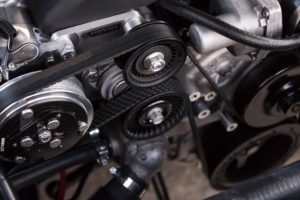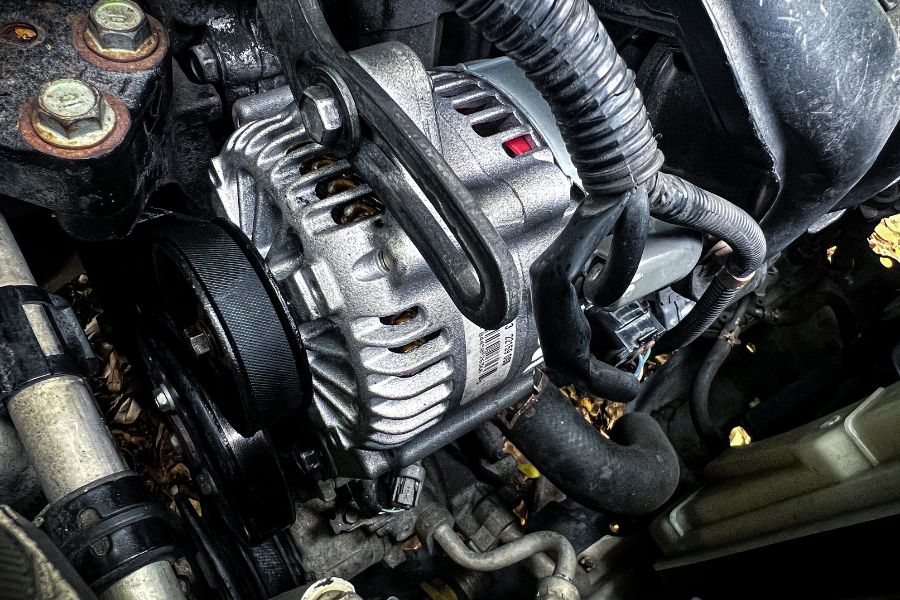Quick Navigation
Car squealing when you start your car is frustrating, especially if you don’t know what’s the cause of it.

In this article, we will walk you through common causes of why your car squeals whenever you start it and possible ways to fix it.
Reasons Why Your Car Squeals When You Start It
Below are some likely reasons why your car squeals when you start it, the reason may not be a definite one, therefore you are strongly advised to seek professional help after you try some DIY options whenever your car has issues in order not to complicate issues and for your safety.
There are several distinct causes for why your car can start squealing whenever you start it.
If this has been happening to you for a while, you might be able to spot some patterns. Does the noise only start up your automobile and stop after a few minutes?
How loud is the sound? Where’s the sound coming from?
Let’s Find Out Ways to Fix It
Nevertheless, you can try some DIY steps if your car squeals when you start it. There are a few things you can do to fix the problem.
If none of the solutions below fixes your car from squealing when you start it then there may be something wrong with you will need to take your car to a mechanic for a proper check-up.
Faulty Alternator
You should make sure that the squealing sound coming from your car is not an indication that your alternator is failing before starting to work on your belt.
When you start your car, a faulty alternator may make the engine squeal. This is accomplished by obstructing the belt’s operation.
Remove the belt and rotate the pulley to check the alternator to make sure it is operating properly.
Make sure it spins smoothly; that’s what you want. It can be a clue that your alternator is failing if you hear any noises, feel any crunching, or have trouble turning it.
When you start the car, a loud screeching sound can be coming from it. Along with the belt, the alternator needs to be replaced.
Solution
Alternator replacement is not a task for the typical do-it-yourself enthusiast. It requires someone with strong mechanical aptitude and knowledge of motor repairs.
You’d be far better off leaving the task to the specialists if you’re not confident about it.
An alternator is an electrical component found in the engine compartment of your car. Its responsibility is to produce electricity to recharge the battery.
This is accomplished by connecting to the engine drive, and as it rotates, it generates electricity.
The rotor, a collection of rapidly rotating magnets, and the stator, a bundle of copper wires, are what generate the power.
A regulator is included in its parts to guarantee that the correct amount of electricity flows throughout the vehicle.
The new alternator, a replacement alternator belt, and a variety of tools are required. A belt tensioner tool, a voltmeter, and a few additional items are required among those tools to keep things simple.
Protect the Electronic Settings in Your Car
You might need to utilize a memory saver to record all of your electronic preset data, depending on your vehicle and the requirements of the repair manual.
Disconnect the negative battery cable once you’ve resolved that.
To find out if your alternator belt is a serpentine or a V-belt, check it. The underside of a serpentine belt will have ribs and will be flat and thin.
Unsurprisingly, a V-shaped belt is in existence. You can skip stepping 5 if your alternator uses a V-belt.
Take the Serpentine Belt Off
Be very careful to avoid getting hurt if the belt tensioner snaps back into place because it is spring-loaded. wherever possible, keep your hands free.
If you have to use only one hand, the task will be much more difficult!
To make the belt removal process simpler, loosen the belt tensioner. The belt may require some patience because moving or taking it off can be challenging.
Disconnect All the Components
To ensure that you know which wires and fasteners go where during reassembly, mark all of the components.
Remove the Alternator’s Bolts
If a V-belt is present, the alternator must first be loosened before the belt can be removed.
Instead of a separate tensioning component, as with a serpentine belt, the alternator in these situations provides the belt tension.
Set up the Fresh Alternator
Make sure the fit is nice and snug. All of the bolt holes should be lined up. Tighten the bolts to the proper tension.
Re-Install the Belt
There are a few methods for reinstalling the alternator belt if you experience any difficulties.
Some alternators contain a transverse bolt that enables the alternator to move on its mounting bracket. The belt tension can be altered as a result.
Reconnect the Battery
Start the vehicle, attach your voltmeter, and reconnect the negative battery terminal. Your alternator’s correct output should be between 13.1 and 16.5 volts.
Faulty Serpentine Belt

A faulty serpentine belt is one of the major reasons why your car starts to squeal just after you start your car or while it’s warming up.
Typically, a fan belt or serpentine belt is located near the front of the engine compartment. The serpentine belt, which links to and powers accessories, is driven by the car’s engine.
The serpentine belt is typically to blame for the squealing. It is an extraordinarily lengthy belt that is wrapped around numerous pulleys when you open your hood.
The water pump, power steering, AC, and alternator are just a few of the systems that it interfaces to.
There are three primary causes of serpentine belt squeaking, all of which are simple to address.
- Belt spillage
- Loose tensioner
- Damaged belt
Solution
Spray some belt dressing or spray lubrication on the belts while the engine is running and you are wearing your safety glasses.
The sound may abruptly stop if there is an issue with the belts. This is a temporary solution. In fact, in a little while, the belt can begin to squeal soon.
Try to flex the belt with your fingers after turning off the engine. How much you should be able to move will be specified in the workshop manual.
While new serpentine belts will have much less flex, vintage V belts may have up to an inch. On the belts’ exterior, look for fractures or glazing.
As they age, the belts change from being rather supple to becoming rigid and polished.
Even with the proper tension, a hard belt has a higher likelihood of slipping. Nothing can be done but replace the belt if it is worn out and hard.
Conclusion
When your car squeals, it can be a real pain. Not only is it inconvenient, but it can also be dangerous. If you’re experiencing this problem continuously.
Always take precautionary measures, and don’t ignore any warning signs from your car, if you can’t handle the situation, make sure you get professional help to avoid compounding the situation and most especially the safety of your car and you.
If you’re experiencing car squealing don’t ignore it, take action to fix the problem as soon as possible. Ignoring it will only lead to further damage and expensive repairs.

With comprehensive experience in writing exceptional quality articles and blogs about cars and related stuff, Daniel is one of the finest bloggers and a hardcore car lover we have. He is an ASE certified technician with an across-the-board experience of 10 years in the industry. He could not help tinkering with anything he got his hands on from a young age, which led to his remarkable career in the automotive repair industry.
When he is not under any hood, you can find him on the water or in the woods to pursue his passion for hunting and fishing. He has been writing for multiple sectors and is a regular contributor to several publications.
He currently owns a Nissan 300ZX TT and a Pearl Yellow but plans to upgrade it to 550 HP. His favorites include the Koenigsegg CCX and Lamborghini Diablo 6.0 VT, but for him, the Ferrari 360 Spider is one of the sexiest cars that exists to date.
Being an avid world traveler, he has spent most of his time analyzing the automotive markets, latest technology, and local favorites to enhance his knowledge base. He is currently living in North Caroline, where it’s all about food and coffee and, of course, cars.







